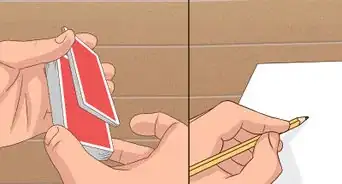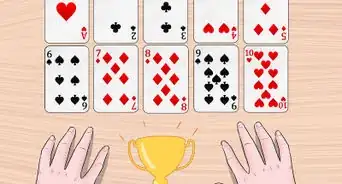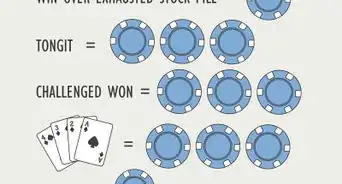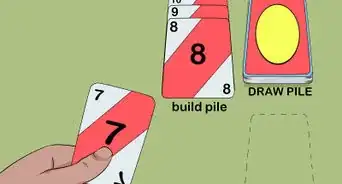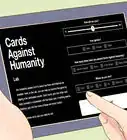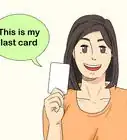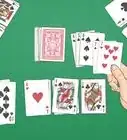This article was co-authored by wikiHow staff writer, Hunter Rising. Hunter Rising is a wikiHow Staff Writer based in Los Angeles. He has more than three years of experience writing for and working with wikiHow. Hunter holds a BFA in Entertainment Design from the University of Wisconsin - Stout and a Minor in English Writing.
This article has been viewed 38,413 times.
Learn more...
If you’re looking for an exciting card game to play with the entire family, Shanghai Rummy, or “California Rummy,” is so much fun. All you need are 3–8 players, a few decks of cards, and a couple of hours to play. While there are a few terms to learn, the game is super easy to pick up after a few minutes. We know you’re excited to start a game, so keep reading for everything you need to know about setting up and playing Shanghai Rummy!
Things You Should Know
- Play Shanghai Rummy with 2 decks of cards & 1 joker if you have 3 or 4 players, or 3 decks of cards & 2 jokers for 5–8 players.
- Melds are “sets” of cards with the same value or “runs” of cards in the same suit in numerical order. Each round has required melds you’ll try to form in your hand.
- On your turn, draw a card from the top of the deck or the discard pile. If you have the melds required for the round, play them. Then, discard 1 card from your hand.
- Score points for any cards left in your hand at the end of the round. The player with the fewest points after 10 rounds is the winner.
Steps
Round Setup
-
1Shuffle 2–3 decks of cards together. If you’re playing with 3 or 4 people, then use two 52-card decks of cards with 1 joker for a total of 105 cards. If you have 5–8 players, then use 3 decks and 2 jokers for a total of 158 cards. Shuffle the cards thoroughly to create the deck.[6]
- Aces can be used as a high value (coming after the king) or as a low value (coming before a 2)
- Jokers are wild cards, so you can use them in any meld.
-
2Deal 11 cards to each player. Choose a dealer at random. Start with the person to the left of the dealer and deal clockwise around the table until everyone has 11 cards.[7]
-
3Flip the top card of the deck over to form the discard pile. Set the rest of the deck in the middle of the table so everyone can easily reach it. Take the top card and put it face-up next to the deck. After that, you’re ready to start the round.[8]
Gameplay
-
1Draw a card from the top of the deck or the discard pile. You always have to draw a card on your turn, but you get to choose where you take the card from. If you could use the top card in the discard pile to help form a meld in your hand, then take it. Otherwise, you can blindly draw a card from the top of the deck.[9]
- If you take a card from the top of the deck, other players get the option to buy the top card of the discard pile.
-
2Play the current round’s meld or lay off cards if you’re able to. If you have the cards to make all of the melds for the current round, you can play them face-up on the table in front of you. On each turn after you play the round’s melds, you can lay off your cards and add them to any meld that’s left on the table.[10]
- If the round requires more than one meld, you have to play them all at the same time. If you only have one of the melds, you have to keep it in your hand until you have the others.
- You have to wait until you play the round’s melds before you can lay off cards, and you cannot play melds and lay off cards during the same turn.
-
3Put a card from your hand into the discard pile. Choose one of the cards that you still have left in your hand and set it face-up on top of the discard pile. If you discard the last card in your hand, then you go out and end the round immediately.[11]
- Try to discard a card that doesn’t fit into any melds since it’ll be tougher to play.
-
4Shuffle the cards to start the next round. The player to the left of the dealer becomes the new dealer for the next round. Gather all of the remaining cards in each player's hand and shuffle them back into the rest of the deck. Deal out 11 new cards to each player and begin your next round.[12]
References
- ↑ https://katieusingwords.com/2019/04/24/how-to-play-shanghai-rummy/
- ↑ https://www.catsatcards.com/Games/ContractRummy.html
- ↑ https://www.catsatcards.com/Games/ContractRummy.html
- ↑ https://katieusingwords.com/2019/04/24/how-to-play-shanghai-rummy/
- ↑ https://katieusingwords.com/2019/04/24/how-to-play-shanghai-rummy/
- ↑ https://katieusingwords.com/2019/04/24/how-to-play-shanghai-rummy/
- ↑ https://www.catsatcards.com/Games/ContractRummy.html
- ↑ https://www.pagat.com/rummy/ctrummy.html
- ↑ https://www.pagat.com/rummy/ctrummy.html
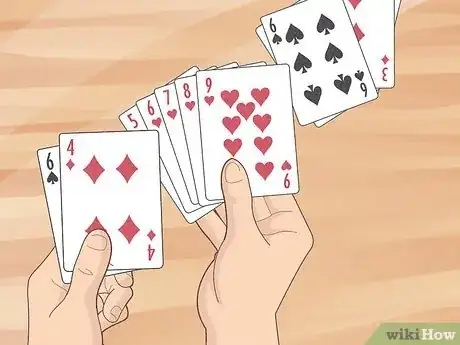
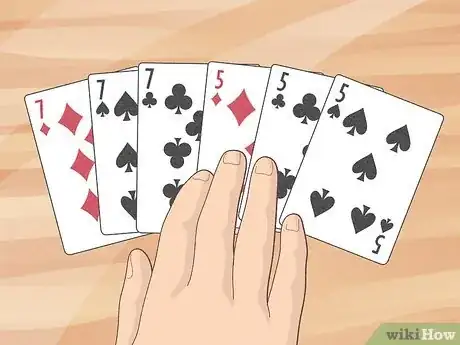
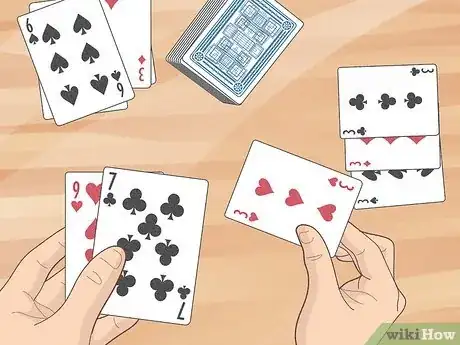
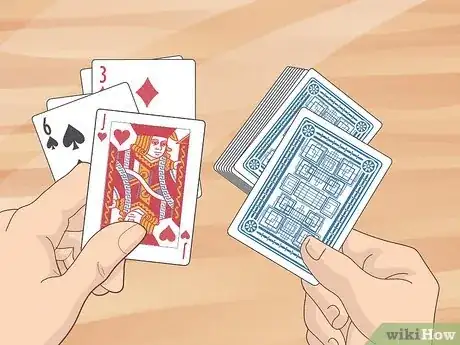

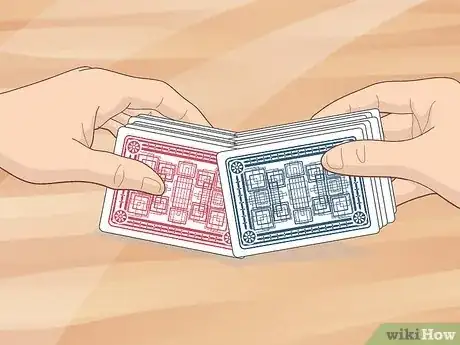
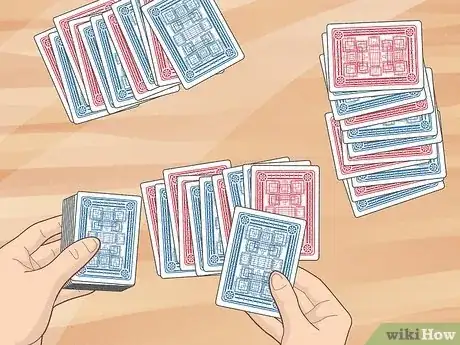
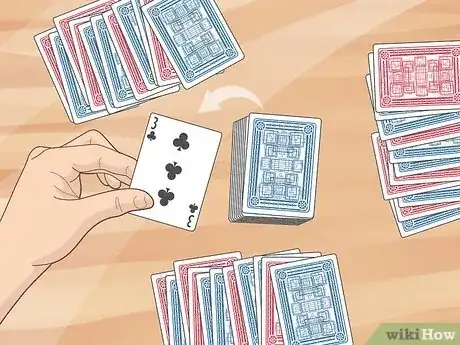
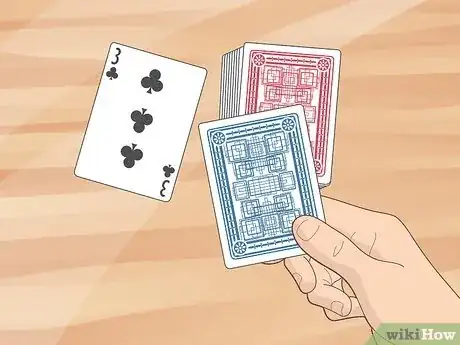
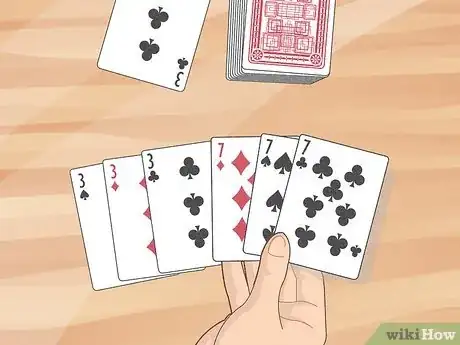
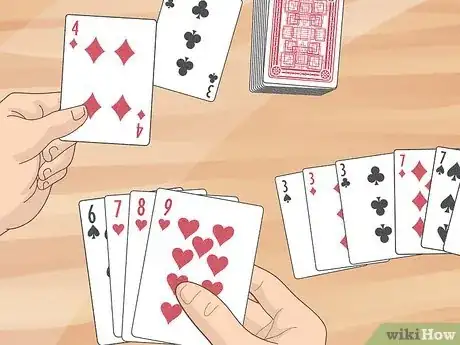
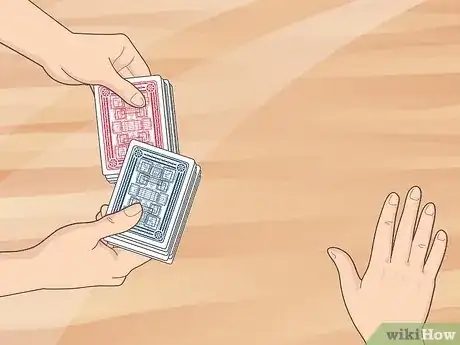
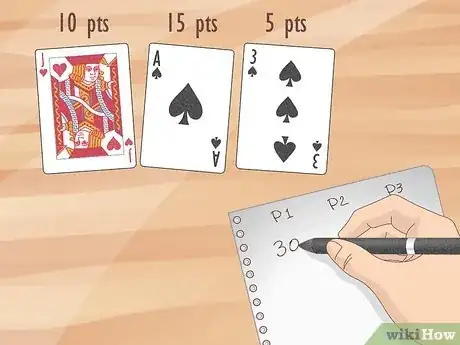
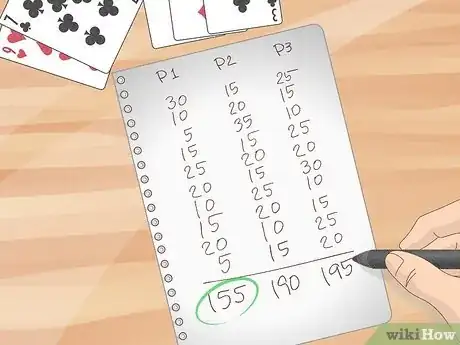


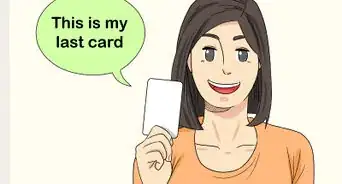

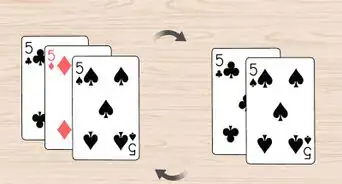


-Step-17.webp)
